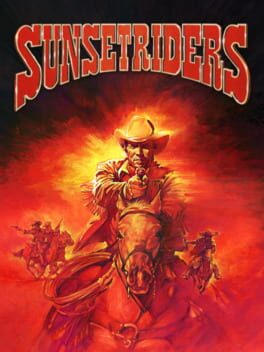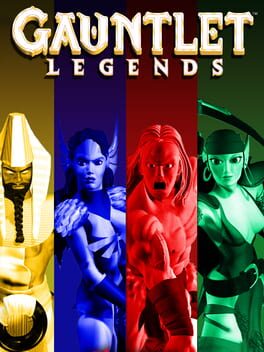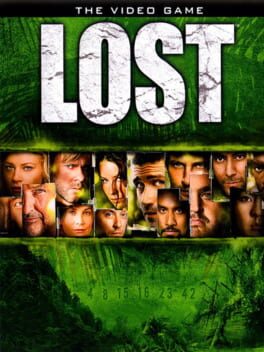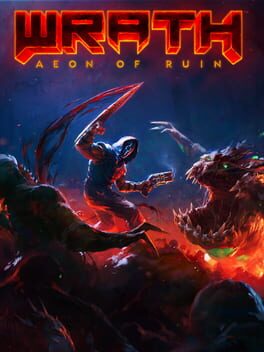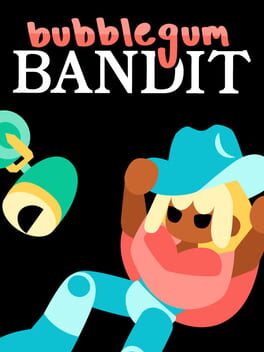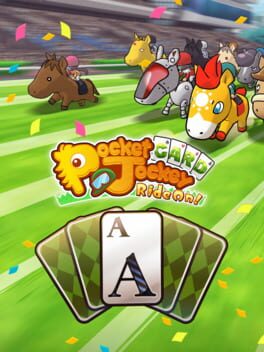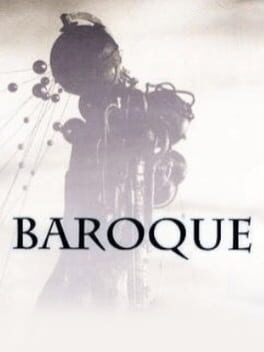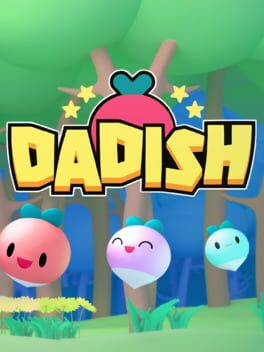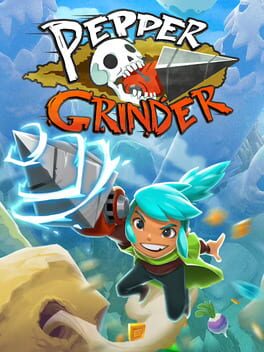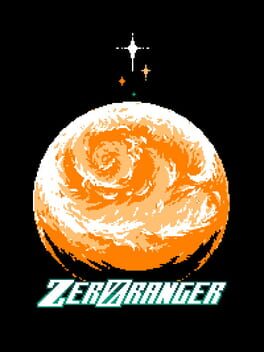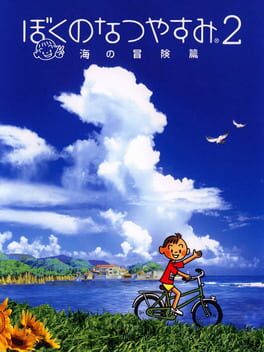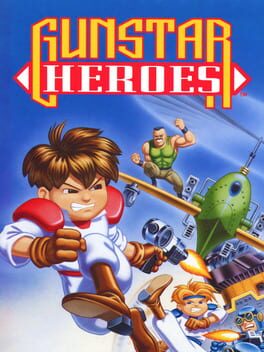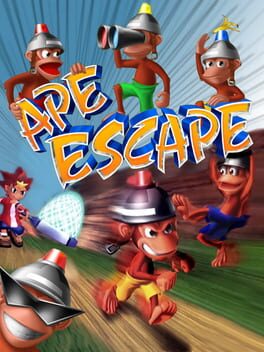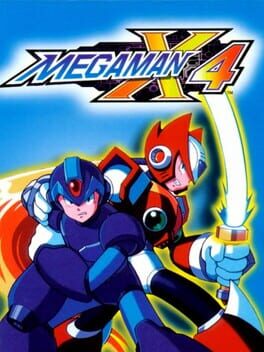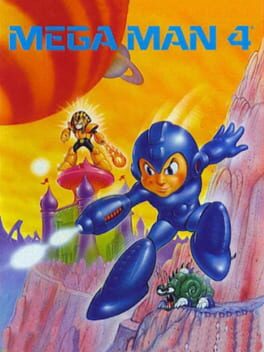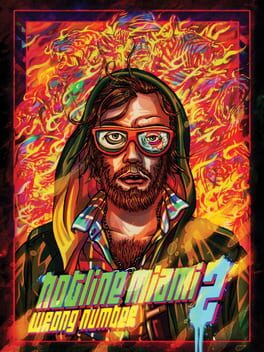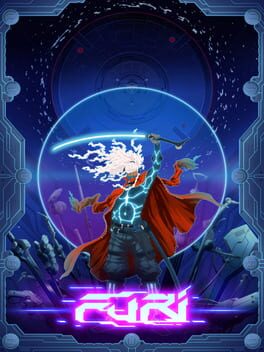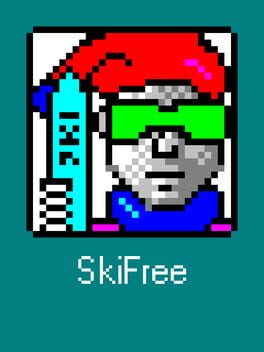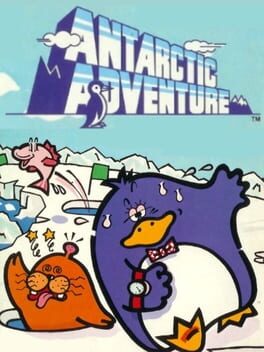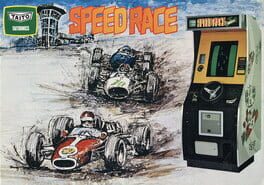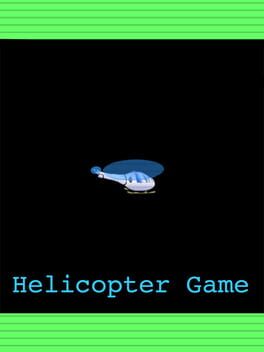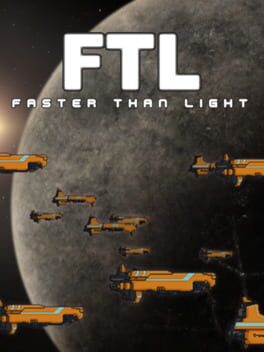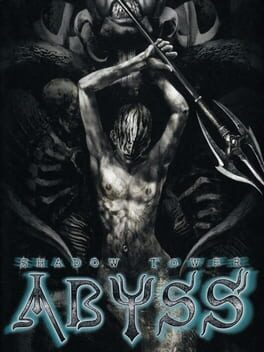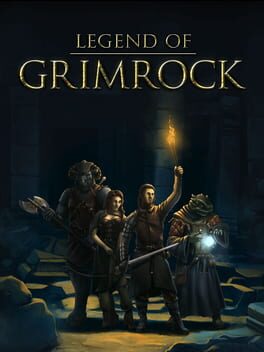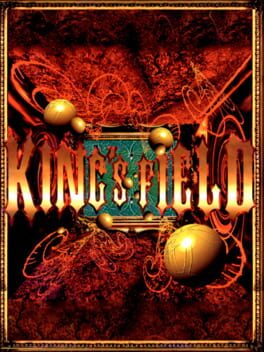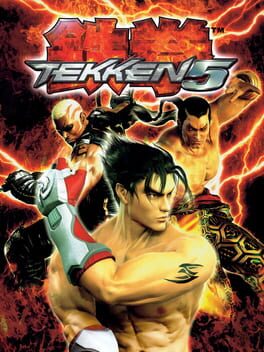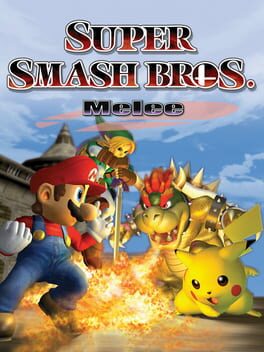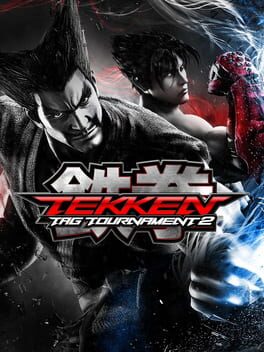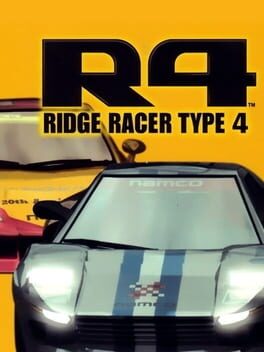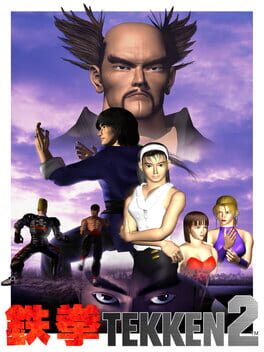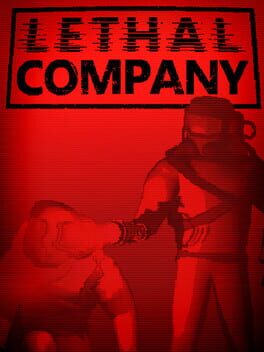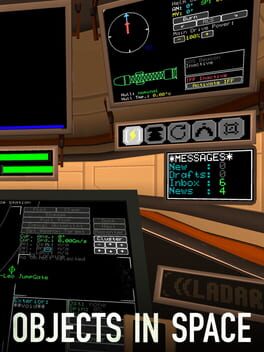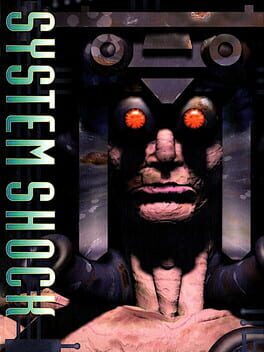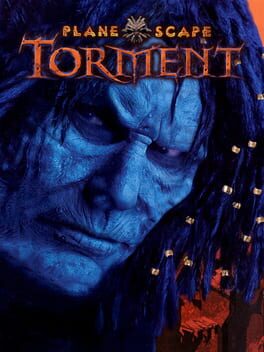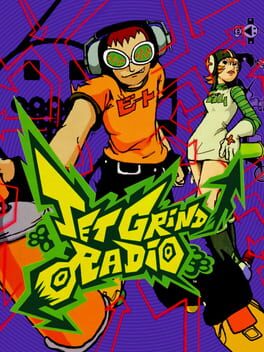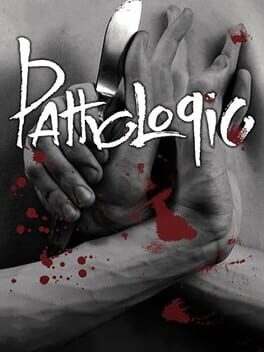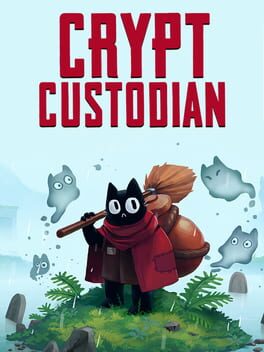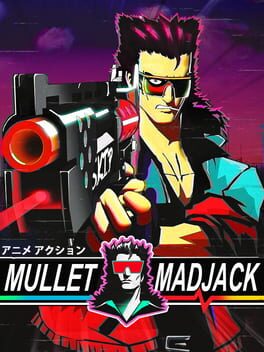Silverhand
BACKER
775 reviews liked by Silverhand
Sunset Riders
1991
Retro Yearly List #17 [1991: Sunset Riders]
Okay, wow.
This game is often mentioned when it comes to ranking the best SNES games of all time, so my expectations were high, but I was still impressed.
Sunset Riders normally would fall into the status of those "hidden gems" since it's just a one-game title, but it went far beyond that, becoming an undisputed must-play game. I can see the reason: the game is a blast.
The Western atmosphere, which is something not enough explored in games, is pretty well implemented here. For that same aspect, OST does help a lot, and by the way, what a BANGER, Stage 1 theme went right into my top game tracks of all time, I'm listening to it in loop while writing this review.
The graphics are what you expect from SNES, as beautiful as the Arcade version. The gameplay works very well for the way the game is constructed, I just could not get used to the slide properly for whatever reason.
The game's difficulty is most of the time balanced, with a few sections of high unfairness, usually, the first minutes of the horse levels, which are a huge mess that will require you a response time comparable to the bonus stages at full speed.
Chief Scalpem boss is also a pain in the ass, and the final boss is a bullet hell. Those elements didn't take away my satisfaction with the game, though. After finishing this I got instigated to play it again and again, beating it about 3 times, and that was after beating the Arcade version twice.
I've saved the best for the end: The bosses.
I love boss battles, even more when they have identities, unique patterns, and personalities, and that's the case here. Everyone here can be easily remembered by their catchphrases, for example. The El Greco easter egg with Cormano on the Arcades is also a genius touch.
Even the main characters have their own characteristics which is incredible, they really put work on this.
Well, so this is what Konami was like at its full power, huh?
Okay, wow.
This game is often mentioned when it comes to ranking the best SNES games of all time, so my expectations were high, but I was still impressed.
Sunset Riders normally would fall into the status of those "hidden gems" since it's just a one-game title, but it went far beyond that, becoming an undisputed must-play game. I can see the reason: the game is a blast.
The Western atmosphere, which is something not enough explored in games, is pretty well implemented here. For that same aspect, OST does help a lot, and by the way, what a BANGER, Stage 1 theme went right into my top game tracks of all time, I'm listening to it in loop while writing this review.
The graphics are what you expect from SNES, as beautiful as the Arcade version. The gameplay works very well for the way the game is constructed, I just could not get used to the slide properly for whatever reason.
The game's difficulty is most of the time balanced, with a few sections of high unfairness, usually, the first minutes of the horse levels, which are a huge mess that will require you a response time comparable to the bonus stages at full speed.
Chief Scalpem boss is also a pain in the ass, and the final boss is a bullet hell. Those elements didn't take away my satisfaction with the game, though. After finishing this I got instigated to play it again and again, beating it about 3 times, and that was after beating the Arcade version twice.
I've saved the best for the end: The bosses.
I love boss battles, even more when they have identities, unique patterns, and personalities, and that's the case here. Everyone here can be easily remembered by their catchphrases, for example. The El Greco easter egg with Cormano on the Arcades is also a genius touch.
Even the main characters have their own characteristics which is incredible, they really put work on this.
Well, so this is what Konami was like at its full power, huh?
Gauntlet Legends
1998
podcast fodder. it occurred to me over the course of playing that for four-player couch co-op like this, the mindlessness is a boon. you're supposed to be catching up with your friends and fucking around, not actually invested in the game.
it pulls surprisingly heavily from the original gauntlet with little variation: destroy generators that endlessly spawn, open chests and gates with keys, use potions as AoEs, destroy walls, open other walls. the only other mechanical changes is some light meter management, where you can activate one of three different special abilities depending on the level of the gauge or siphon some off to use a dash-twirl kinda action. other than weaving those in, you'll just be mashing the shoot/attack button, and with the advent of a 3D world and shifting perspective for the game, they've slathered auto-aim all over your toolkit, so there's almost no engagement other than being there to press the button... and if you're close enough to an enemy you'll auto-attack anyway, so who cares.
the main intrigue instead are the variety of environments and stages, each with their own hazards and puzzles to solve. you might rend an arena asunder by pressing a switch, skewing the two halves apart and exposing new corridors in the process. there's moments where you'll rearrange a set of catwalks by pressing a series of switches (although you never have access to more than one at once) to raise and lower them to match your character's height. in some (many) instances, you must painstakingly root out a breakable wall and enter it to press a switch and open a different wall somewhere else. indeed, most of the game consists of finding switches to press to access a new area; it is not uncommon for there to be chains of three to seven switches that lead to each other in the span of a single room. is what the switches activate occasionally cool, giving you a new path through the often intricate area designs? sure. but expect the whole game to follow virtually the exact same loop throughout: mash attack, press switch.
there's occasional gesturing to more of diablo-like system, the style which would quickly eat this series' lunch by the sixth gen, though it often doesn't land given the game's arcade-focused nature. other than adding a leveling and stats system to the original gauntlet experience, there's also this odd loot/power-up component, some of which is random but others of which are actually specific, often obscure unlockables within particular levels. of course, seeing as there's no permanence regarding items beyond keys/potions, these end up being temporary powerups though which scarcely last; the thrill of grinding out skorne 1 so that you can get a piece of his armor set feels quaint when faced with the reality that said item will disappear 90 seconds into the next stage you play. as an aside: per the original game you're intended to replenish your health or revive yourself with extra credits, but seeing as this console version does not have that system, dying will kick you back out to the hub with whatever health you had going in. that might seem fine, but if you actually want to replenish to full health, expect to spend a lot of time grinding the first level for the 400-500 in health pickups that are guaranteed. for my final boss run, where I needed my level 60 max of 7000 health after spending most of the game maintaining about 2000, this was quite a chore.
this sega dreamcast version seems like a hodge-podge of each of the other versions of this game. compared to the playstation and n64 versions, which have a different set of levels and a proper inventory system, the dreamcast version serves as a more direct port of the original's levels and item system. oddly enough, it does have the additional endgame levels and skorne refight from the original home ports. it also carries in certain mechanical changes from the game's incremental sequel dark legacy, such as all of the new character classes and a functionally useless block ability; what the fuck is the point of a block in a mostly ranged game where having attack advantage is always a priority to avoid getting flanked and overwhelmed? probably the most bizarre aspect of the dreamcast version is that it runs like dogshit even with only a single player, and it retains the somewhat hideous look of the original game. not sure why the dc wasn't able to handle a relatively low-poly game built for a 3DFX banshee gpu, but I'm going to assume fault on the part of the developers.
still, a podcast game with some cool level visuals has its own appeal. was unfortunately left curious about dark legacy and the later gameplay revisions in seven sorrows. an arcade-style dungeon crawler does appeal to me in a base way, and I appreciate that this was an early attempt at creating an arcade game with a proper progression system (including rudimentary usernames and passwords!). should probably bring some friends along for the ride if I ever get a wild hair to try again.
it pulls surprisingly heavily from the original gauntlet with little variation: destroy generators that endlessly spawn, open chests and gates with keys, use potions as AoEs, destroy walls, open other walls. the only other mechanical changes is some light meter management, where you can activate one of three different special abilities depending on the level of the gauge or siphon some off to use a dash-twirl kinda action. other than weaving those in, you'll just be mashing the shoot/attack button, and with the advent of a 3D world and shifting perspective for the game, they've slathered auto-aim all over your toolkit, so there's almost no engagement other than being there to press the button... and if you're close enough to an enemy you'll auto-attack anyway, so who cares.
the main intrigue instead are the variety of environments and stages, each with their own hazards and puzzles to solve. you might rend an arena asunder by pressing a switch, skewing the two halves apart and exposing new corridors in the process. there's moments where you'll rearrange a set of catwalks by pressing a series of switches (although you never have access to more than one at once) to raise and lower them to match your character's height. in some (many) instances, you must painstakingly root out a breakable wall and enter it to press a switch and open a different wall somewhere else. indeed, most of the game consists of finding switches to press to access a new area; it is not uncommon for there to be chains of three to seven switches that lead to each other in the span of a single room. is what the switches activate occasionally cool, giving you a new path through the often intricate area designs? sure. but expect the whole game to follow virtually the exact same loop throughout: mash attack, press switch.
there's occasional gesturing to more of diablo-like system, the style which would quickly eat this series' lunch by the sixth gen, though it often doesn't land given the game's arcade-focused nature. other than adding a leveling and stats system to the original gauntlet experience, there's also this odd loot/power-up component, some of which is random but others of which are actually specific, often obscure unlockables within particular levels. of course, seeing as there's no permanence regarding items beyond keys/potions, these end up being temporary powerups though which scarcely last; the thrill of grinding out skorne 1 so that you can get a piece of his armor set feels quaint when faced with the reality that said item will disappear 90 seconds into the next stage you play. as an aside: per the original game you're intended to replenish your health or revive yourself with extra credits, but seeing as this console version does not have that system, dying will kick you back out to the hub with whatever health you had going in. that might seem fine, but if you actually want to replenish to full health, expect to spend a lot of time grinding the first level for the 400-500 in health pickups that are guaranteed. for my final boss run, where I needed my level 60 max of 7000 health after spending most of the game maintaining about 2000, this was quite a chore.
this sega dreamcast version seems like a hodge-podge of each of the other versions of this game. compared to the playstation and n64 versions, which have a different set of levels and a proper inventory system, the dreamcast version serves as a more direct port of the original's levels and item system. oddly enough, it does have the additional endgame levels and skorne refight from the original home ports. it also carries in certain mechanical changes from the game's incremental sequel dark legacy, such as all of the new character classes and a functionally useless block ability; what the fuck is the point of a block in a mostly ranged game where having attack advantage is always a priority to avoid getting flanked and overwhelmed? probably the most bizarre aspect of the dreamcast version is that it runs like dogshit even with only a single player, and it retains the somewhat hideous look of the original game. not sure why the dc wasn't able to handle a relatively low-poly game built for a 3DFX banshee gpu, but I'm going to assume fault on the part of the developers.
still, a podcast game with some cool level visuals has its own appeal. was unfortunately left curious about dark legacy and the later gameplay revisions in seven sorrows. an arcade-style dungeon crawler does appeal to me in a base way, and I appreciate that this was an early attempt at creating an arcade game with a proper progression system (including rudimentary usernames and passwords!). should probably bring some friends along for the ride if I ever get a wild hair to try again.
Lost: Via Domus
2008
Lost holds a special place in my heart. It came out at a time in my life when I really needed some good escapism, and by the time it concluded, I was in a much better place. I love its constant plot twists and drama bombs, and the fact that it wasn't shy about just killing off main characters. It always felt like anything could happen, and it was fun to think about even when I wasn't watching it. I didn't go on message boards or listen to podcasts or anything, but all the good feelings it gave me when I needed them most made it my favorite show and I've watched it more times than I can count.
My wife knows all this about me which is why she got me Lost: Via Domus for my birthday. It jumped immediately to the top of my list and took just a couple days to roll credits. I'm glad it worked out that way because it feels appropriate to end the year with something I'm kind of uniquely qualified to appreciate.
The main reason for that, of course, is that Via Domus is pretty rough as a game. Dialog is checklist-style question-response with no consequences. There are like 4 minigames which comprise the majority of the gameplay (outside of just walking around looking at stuff; more on that below), and all of them are pretty simplistic. There's one scripted shooting segment that took me like 15 tries because you get one hit killed and the guys have laser accuracy and fire instantly. The controls in general are super sluggish and imprecise. You're constantly fighting the auto-centering camera, since most of what you interact with is on the ground. The checkpointing is dreadful, often immediately before a long unskippable cutscene.
And you know this may be the only time I ever say this: I really didn't care about the gameplay. As clunky and shallow as it was, I was having too much fun playing around on Lost Island to pay it any mind. As a game it might be bad, but as fan service, Via Domus hits a whole lot more high notes.
Several major locations from the show are lovingly recreated in the kind of meticulous detail you'd expect from a rabid fan working closely with the show's creators. The characters and locations are presented with admirable fidelity to the source material. I wish they had gotten more of the voice actors from the show's cast, but I get the impression they didn't have the budget for that and the stand-in cast they did have stepped up admirably.
Stand-in actor or not, when Jack started pulling his Mr. Bossypants routine my wife and I both said "Ugh, fuck Jack" and it was just like watching the show again. It's even structured the same; with each act set up like an episode of the show with a synopsis, cold open, title card, series of escalating clusterfucks interspersed with flashbacks, smash cut to the logo, rinse and repeat. It all feels completely authentic.
Just having the opportunity as a fan to explore those iconic spaces from the show, and type commands into the cryptic Dharma Initiative computers and see everything from new angles is very satisfying and specifically rewards those of us nerds that would notice little details like how the vent in the vault ceiling is boarded shut (because after Kate escaped through there Locke briefly mentioned off hand that he sealed it up. Obviously).
It's also fun to see the cast through the eyes of someone who isn't in the main cast, as they're all a bunch of suspicious elitist assholes. It's completely consistent characterization but isn't as big of a factor in the show since it focuses mainly on the main cast.
That's my biggest takeaway on the game's value for me as a fan: a look back with an alternative perspective. I get to revisit this warm thing from my past and see it in a new light.
I've always been a fan of New Year's; I like that it's a secular holiday and the idea of taking a little time to both reflect and anticipate resonates with me. I got some life goals done in 2023. Got off the cigarettes. Had some losses. Kept my brilliant and beautiful wife happy. Got a little sloppy writing done!
I have a lot of fun here and I appreciate everyone who shares their great reviews. And the hearts are nice; holla to my core crew who heart every ramble. Here's to 2023, a year we're never going to forget; and to 2024, another year of balls-to-the-wall backlogging!
My wife knows all this about me which is why she got me Lost: Via Domus for my birthday. It jumped immediately to the top of my list and took just a couple days to roll credits. I'm glad it worked out that way because it feels appropriate to end the year with something I'm kind of uniquely qualified to appreciate.
The main reason for that, of course, is that Via Domus is pretty rough as a game. Dialog is checklist-style question-response with no consequences. There are like 4 minigames which comprise the majority of the gameplay (outside of just walking around looking at stuff; more on that below), and all of them are pretty simplistic. There's one scripted shooting segment that took me like 15 tries because you get one hit killed and the guys have laser accuracy and fire instantly. The controls in general are super sluggish and imprecise. You're constantly fighting the auto-centering camera, since most of what you interact with is on the ground. The checkpointing is dreadful, often immediately before a long unskippable cutscene.
And you know this may be the only time I ever say this: I really didn't care about the gameplay. As clunky and shallow as it was, I was having too much fun playing around on Lost Island to pay it any mind. As a game it might be bad, but as fan service, Via Domus hits a whole lot more high notes.
Several major locations from the show are lovingly recreated in the kind of meticulous detail you'd expect from a rabid fan working closely with the show's creators. The characters and locations are presented with admirable fidelity to the source material. I wish they had gotten more of the voice actors from the show's cast, but I get the impression they didn't have the budget for that and the stand-in cast they did have stepped up admirably.
Stand-in actor or not, when Jack started pulling his Mr. Bossypants routine my wife and I both said "Ugh, fuck Jack" and it was just like watching the show again. It's even structured the same; with each act set up like an episode of the show with a synopsis, cold open, title card, series of escalating clusterfucks interspersed with flashbacks, smash cut to the logo, rinse and repeat. It all feels completely authentic.
Just having the opportunity as a fan to explore those iconic spaces from the show, and type commands into the cryptic Dharma Initiative computers and see everything from new angles is very satisfying and specifically rewards those of us nerds that would notice little details like how the vent in the vault ceiling is boarded shut (because after Kate escaped through there Locke briefly mentioned off hand that he sealed it up. Obviously).
It's also fun to see the cast through the eyes of someone who isn't in the main cast, as they're all a bunch of suspicious elitist assholes. It's completely consistent characterization but isn't as big of a factor in the show since it focuses mainly on the main cast.
That's my biggest takeaway on the game's value for me as a fan: a look back with an alternative perspective. I get to revisit this warm thing from my past and see it in a new light.
I've always been a fan of New Year's; I like that it's a secular holiday and the idea of taking a little time to both reflect and anticipate resonates with me. I got some life goals done in 2023. Got off the cigarettes. Had some losses. Kept my brilliant and beautiful wife happy. Got a little sloppy writing done!
I have a lot of fun here and I appreciate everyone who shares their great reviews. And the hearts are nice; holla to my core crew who heart every ramble. Here's to 2023, a year we're never going to forget; and to 2024, another year of balls-to-the-wall backlogging!
Wrath: Aeon of Ruin
2019
Wrath's appeal is a niche within a niche- the throwback shooter pivots itself on high-octane action inside of short/varied levels usually, and Wrath isn't this. It's high-octane; it's more intense than any other throwback shooter I've played by a heavy long shot, but it doesn't let you cool down. Levels are designed with less focus on a gimmick (arguably to its detriment) and more so with a focus on being gauntlets. Each one clocks in at about twenty minutes to half-an-hour if you're not speedrunning, and the appeal might seem limited given the small enemy roster and lack of variety, but I think Wrath taps into something totally worthwhile once you give it some time. The game slowly feeds you new content, thus demanding you figure out the ideal strategies for each enemy- which might reveal maybe the best weapon/item roster I've ever seen in these types of games. Every weapon has a primary fire and an alt-fire that is practical for the constant hostile ways enemies swarm you, and I do mean swarm you. Some levels clocked in at around 500+ enemies, and that's where Wrath's secret lays. It's as much a Serious Sam as it is a Quake, and it's a lot better than the average horde-shooter, too! Every weapon choice allows for high player expression here because they're pretty much all equally practical; you really need to balance out function and conserving ammo to invent your own ideal combos to put down the increasingly tanky enemies or large swarms. As the game really starts kicking you down with full on armies later on, it's always encouraged to explore for secrets and collect items, which are super utilitarian and I didn't find one of them uninteresting. Importantly, items are so limited that collecting them (and ammo) across multiple levels makes the entire game a resource-management challenge, as opposed to just one level usually. Saves themselves, being turned into an resource, also fixes one of the things I dislike most about classic PC gaming: the encouragement of save-scumming. Yeah, they could've dumbed down the number of Soul Tethers you get quite a bit, but just the notion of them and the Shrines is great. All of Wrath feels like a trial of reflex and moment-to-moment wit to me, and I love it! You might find it repetitive/padded, and I wouldn't blame you, but I loved Arcane Dimensions.
Bubblegum Bandit
2023
Bubblegum Bandit is a cute little action platformer where you must infiltrate spaceships and steal the reactor core at the center of each. To complete this task, you have the ability to flip gravity back and forth, while also armed with a bubblegum pistol to stick enemies and objects in place. There are a lot of fun moments that remind me of VVVVVV, but this game is much more bite-sized. I liked the steady introduction of new mechanics and the music and visuals were pretty good. I wish there were more different environments, and some of the controls felt a little unintuitive, but overall, I rescued all the hostages and completed the game.
Computer, generate a niche game.
If you've ever played one of those "make-your-own-game" games like Game Dev Story or Game Dev Tycoon or Mad Games Tycoon or any of the millions of fucking Kairosoft knock-offs out there, you're familiar with how the real-world game design process tends to be abstracted into gameplay. In order to keep things from getting too complicated, these tycoon games usually have a design pipeline which asks the player to combine a "genre" tag with a "theme" tag. The more "appropriate" the combination of tags, the better your fictional game tends to sell. Mixing "action" with "shooter" is almost universally a safe pick, as is something like "simulation" with "motorsports". Where you'll fall into the weeds, however, is when you decide to get experimental; making an "action farming" game or an "extreme sports RPG" tends to guarantee little more than poor sales and middling reviews. I played Game Dev Story a lot growing up, and it always annoyed me that what I thought were the most interesting and unique combinations always resulted in something that capped out around mediocre. I had game dev aspirations of my own — among other ideas, like being an astronaut or a lawyer — and I vowed that on the day that I could start running a studio of my own, I would never turn down even the wildest of ideas. I would play them, and support them, and make sure that everybody knew how good they truly were.
And I don't especially enjoy this horse-racing solitaire game.
My biggest gripe just comes down to the fact that what we have here is a fairly uninteresting horse racing game standing alongside a fairly uninteresting solitaire game, and the two exist in distinct and separate layers like how oil sits on water. Racing the horse seems to be the primary gameplay element — you can fail to full-clear the solitaire minigame and it doesn't count as a loss, with wins and losses instead coming down to the result of the actual race — but the horse's performance being abstracted into the solitaire minigame really doesn't feel as though it accomplishes much. There's no harmony between these systems. You do solitaire to make the horse run faster and more efficiently, but you could slot any sort of minigame in here and nothing would change. If this was Pocket Sudoku Racer or Pocket Slide Puzzle Racer, the core of racing the horses would remain wholly untouched. How close you got to finishing the minigame before the timer runs out or your deck empties gives you a boost or a penalty, but there are a dozen different games you could substitute in here without noticing a difference. The solitaire game and the horse racing game are hardly reliant on the other, nor does one make the other shine; they just exist together, each acting as an interruption of whatever the last mode of gameplay was.
Of course, Pocket Card Racer isn’t bad, but I don’t believe it to be especially good. The solitaire minigame is decent enough for an hour or two, and the raising of the horses implies that there’s going to be a lot more depth to the racing than there actually is, and it’s all okay. It’s a vehicle to play solitaire as filtered through the lens of being a jockey who’s whipping a horse named Nintendo Biggs on the final stretch of the track. There are far better and far worse ways to play golf solitaire. Grab a deck and imagine a horse running in your mind while you do it. Put on one of the tracks from the game to really immerse yourself, because they’re bangers. You’d get a comparable experience and save yourself some cash.
This is the kind of game that’s going to hit at an exact intersection of what an incredibly small group of people have been begging for all of their lives.
If you've ever played one of those "make-your-own-game" games like Game Dev Story or Game Dev Tycoon or Mad Games Tycoon or any of the millions of fucking Kairosoft knock-offs out there, you're familiar with how the real-world game design process tends to be abstracted into gameplay. In order to keep things from getting too complicated, these tycoon games usually have a design pipeline which asks the player to combine a "genre" tag with a "theme" tag. The more "appropriate" the combination of tags, the better your fictional game tends to sell. Mixing "action" with "shooter" is almost universally a safe pick, as is something like "simulation" with "motorsports". Where you'll fall into the weeds, however, is when you decide to get experimental; making an "action farming" game or an "extreme sports RPG" tends to guarantee little more than poor sales and middling reviews. I played Game Dev Story a lot growing up, and it always annoyed me that what I thought were the most interesting and unique combinations always resulted in something that capped out around mediocre. I had game dev aspirations of my own — among other ideas, like being an astronaut or a lawyer — and I vowed that on the day that I could start running a studio of my own, I would never turn down even the wildest of ideas. I would play them, and support them, and make sure that everybody knew how good they truly were.
And I don't especially enjoy this horse-racing solitaire game.
My biggest gripe just comes down to the fact that what we have here is a fairly uninteresting horse racing game standing alongside a fairly uninteresting solitaire game, and the two exist in distinct and separate layers like how oil sits on water. Racing the horse seems to be the primary gameplay element — you can fail to full-clear the solitaire minigame and it doesn't count as a loss, with wins and losses instead coming down to the result of the actual race — but the horse's performance being abstracted into the solitaire minigame really doesn't feel as though it accomplishes much. There's no harmony between these systems. You do solitaire to make the horse run faster and more efficiently, but you could slot any sort of minigame in here and nothing would change. If this was Pocket Sudoku Racer or Pocket Slide Puzzle Racer, the core of racing the horses would remain wholly untouched. How close you got to finishing the minigame before the timer runs out or your deck empties gives you a boost or a penalty, but there are a dozen different games you could substitute in here without noticing a difference. The solitaire game and the horse racing game are hardly reliant on the other, nor does one make the other shine; they just exist together, each acting as an interruption of whatever the last mode of gameplay was.
Of course, Pocket Card Racer isn’t bad, but I don’t believe it to be especially good. The solitaire minigame is decent enough for an hour or two, and the raising of the horses implies that there’s going to be a lot more depth to the racing than there actually is, and it’s all okay. It’s a vehicle to play solitaire as filtered through the lens of being a jockey who’s whipping a horse named Nintendo Biggs on the final stretch of the track. There are far better and far worse ways to play golf solitaire. Grab a deck and imagine a horse running in your mind while you do it. Put on one of the tracks from the game to really immerse yourself, because they’re bangers. You’d get a comparable experience and save yourself some cash.
This is the kind of game that’s going to hit at an exact intersection of what an incredibly small group of people have been begging for all of their lives.
Baroque
1998
You ever play something so ahead of its time that you could trick someone into believing that it just came out yesterday?
Seriously, what the fuck? 1998? I know Dungeon Hack existed for half a decade before this, and Wizardry a decade before that, but this feels advanced. Like, this might just be me speaking from ignorance, having not played the fifteen years of first-person dungeon crawlers building up to this, but there's something about the entire design philosophy of this that seems modern. Roguelikes weren't new at the time — you know, what with Rogue existing — nor were real-time blobbers, but combining them into one entity that encourages multiple playthroughs to peel back an obfuscated story is something that I last saw in The Binding of Isaac and in precisely zero games before that.
This game is impossibly cool. Let this be the most Hot Topic thing I ever say, but there's something about these hellish industrial land-and-soundscapes that make me feel a sense of belonging. Having a world that's in such an obvious, complete state of disrepair that you can't do much besides band together is a welcome reprieve from our world where everything is awful but the collective populace pretends as though it's fine. Comfort in discomfort; the end-times as impetus to make what's left over better. Of course, that isn't going to stop opportunists like Coffin Man from picking your corpse for loot, but it's not like he's gonna kill you for it, either.
It's a difficult title to discuss, and that's mostly due to how reliant it is on being experienced. This is probably a bit of a nothing statement, given that everything is designed to be experienced by someone, but the actual act of attempting to engage with the game feels more like "the gameplay" than its actual mechanics. Attempting to define this by putting it in neat boxes of clearing rooms and slashing up monsters and leveling up does a disservice to the whole. You cannot break this down into its parts without losing the magic that binds them all together.
I mentioned in my Last Call BBS review that I have a hard time with puzzle-solving because I can't really figure out how to learn how to solve them. With that said, though, brushing through Baroque's cryptic design came naturally to me. It's a game not just of learning, but of risk-management. You learn that Bones are items that can be thrown or consumed to deal enemies and apply buffs, respectively, but what do you do when you find an unidentified Bone on the floor? Do you gnaw on it and risk hurting yourself, or do you toss it at the enemy and risk giving them total invulnerability? When you find a new weapon, do you equip it right away to identify it, or do you avoid doing so because it might have an "adhesive" that makes it impossible to take off? These are basic tenets of Rogue games, but are they really different to puzzles in any meaningful way? You're meant to use your reasoning to figure out what the best course of action should be, and then following that path. Is that distinct from puzzle-solving?
I suppose what makes Baroque work for me is that there's never a binary right or wrong answer. There are good answers, and bad answers, but never right or wrong. Gnawing on a damaging bone will hurt you, but only for 10/20 HP (you start with 99). Stepping on a status pad might afflict you with Lust or Darkness, but only for a minute or two. The game can be harsh, but never unfair. You can never make a single mistake that'll cost you the run; you have to make several mistakes in sequence before you're in danger. I like not being judged completely on a scale of "you did it/you didn't do it". You can succeed here in a lot of different ways, but it's just that some ways are more efficient than others.
Immaculate vibes. It's a wonder that this got a translation nearly 25 years after it released.
Seriously, what the fuck? 1998? I know Dungeon Hack existed for half a decade before this, and Wizardry a decade before that, but this feels advanced. Like, this might just be me speaking from ignorance, having not played the fifteen years of first-person dungeon crawlers building up to this, but there's something about the entire design philosophy of this that seems modern. Roguelikes weren't new at the time — you know, what with Rogue existing — nor were real-time blobbers, but combining them into one entity that encourages multiple playthroughs to peel back an obfuscated story is something that I last saw in The Binding of Isaac and in precisely zero games before that.
This game is impossibly cool. Let this be the most Hot Topic thing I ever say, but there's something about these hellish industrial land-and-soundscapes that make me feel a sense of belonging. Having a world that's in such an obvious, complete state of disrepair that you can't do much besides band together is a welcome reprieve from our world where everything is awful but the collective populace pretends as though it's fine. Comfort in discomfort; the end-times as impetus to make what's left over better. Of course, that isn't going to stop opportunists like Coffin Man from picking your corpse for loot, but it's not like he's gonna kill you for it, either.
It's a difficult title to discuss, and that's mostly due to how reliant it is on being experienced. This is probably a bit of a nothing statement, given that everything is designed to be experienced by someone, but the actual act of attempting to engage with the game feels more like "the gameplay" than its actual mechanics. Attempting to define this by putting it in neat boxes of clearing rooms and slashing up monsters and leveling up does a disservice to the whole. You cannot break this down into its parts without losing the magic that binds them all together.
I mentioned in my Last Call BBS review that I have a hard time with puzzle-solving because I can't really figure out how to learn how to solve them. With that said, though, brushing through Baroque's cryptic design came naturally to me. It's a game not just of learning, but of risk-management. You learn that Bones are items that can be thrown or consumed to deal enemies and apply buffs, respectively, but what do you do when you find an unidentified Bone on the floor? Do you gnaw on it and risk hurting yourself, or do you toss it at the enemy and risk giving them total invulnerability? When you find a new weapon, do you equip it right away to identify it, or do you avoid doing so because it might have an "adhesive" that makes it impossible to take off? These are basic tenets of Rogue games, but are they really different to puzzles in any meaningful way? You're meant to use your reasoning to figure out what the best course of action should be, and then following that path. Is that distinct from puzzle-solving?
I suppose what makes Baroque work for me is that there's never a binary right or wrong answer. There are good answers, and bad answers, but never right or wrong. Gnawing on a damaging bone will hurt you, but only for 10/20 HP (you start with 99). Stepping on a status pad might afflict you with Lust or Darkness, but only for a minute or two. The game can be harsh, but never unfair. You can never make a single mistake that'll cost you the run; you have to make several mistakes in sequence before you're in danger. I like not being judged completely on a scale of "you did it/you didn't do it". You can succeed here in a lot of different ways, but it's just that some ways are more efficient than others.
Immaculate vibes. It's a wonder that this got a translation nearly 25 years after it released.
Resident Evil 4
2011
Replayed RE4, this time using the "real" version with controller rather than mouse and keyboard. The argument I had heard was that re4 wasn't properly balanced for mouselook, which makes the broken headshot + kick combo for crowd control a lot easier. And after playing it, yeah that's definitely the case, especially at first.This WAS my second playthrough though, and after getting used to the stiffness (and the added clunkiness of playing on a handheld switch with default joycons) I found it to not be that much harder than the PC version.
Its a credit to RE4 that even when I was playing horrendously, getting my ass handed to me by that initial village siege and even running out of ammo a few times in the beginning, I was still having a blast. Its also probably indicative of RE4's dynamic difficulty system, that I struggled the most with the early game, so I'm guessing it took pity on me. I admit I haven't played the other RE games other than a bit of Revelations 2, mainly because they seem more horror-y and less action-y.
I played through RE4 during a weeklong trip to london where I was away from my PC. Unfortunately that meant I had to interrupt my playthrough of Killer 7 (which does share some surface similarities to RE4, both part of the capcom 5, both made by mikami, both combine puzzles and shooting at slow enemies, etc) which due to my ADHD almost always murders my motivation/interest for a game. It proved to be the case here as well, I'll have to complete the second half of that game at some other point in the future.
I also attempted pro-mode for re4 but quite frankly, it's beyond my abilities. I made it to stage 3-2 or so and I just couldn't play well enough to not be stomped on by the onslaught of cultists. Supporting my theory that RE4's dynamic difficulty was going easy on me, as pro mode simply locks you to the highest difficulty the whole way through. Its a shame, because for the first few levels, it actually increased my enjoyment of RE4, by forcing me to play "better", exploiting every advantage and learning new strats to overcome the insane odds.
I still think the island is lame, as long as the castle goes on for, I think its the high point for the game. Its also insane to me that the Del Lago bossfight is the first bossfight in the game. First of all, because it sucks, the worst bossfight in the game imo, but also because you'd think the gimmick boss fight using different-ish mechanics to the core gameplay would be put in around the middle or something, to shake things up, but no. Its especially weird cause almost inmediately you have El Gigante which is both a better bossfight and would make a much better first boss.
I still had to laugh during the cutscene before Del Lago, when the castillian peasant says "andale". To those who don't know about spanish dialects, thats like making a game set in rural australia and seeing a random bogan say in his best Larry the Cable guy impression : git er dun! Or something along those lines. Its not even just that the NPCs sound mexican or whatever, cause some of them sound like spanish isn't their first language, others sound plausibly from mainland spain but their dialogue was seemingly machine translated from english? And okay, they kinda get the benefit of the doubt cause the location within spain is never specified, but their pronunciation of "imbecil" indicates they use "seseo" which would mean they are either in southern spain or the canary islands, neither of which sound likely. The real answer is "who gives a shit? They grabbed whomever around the office who knew some spanish and put em in the recording booth" and It doesn't actually bother me, hell, Ive heard the remake replaces the VO with more accurate, professional voices and that sounds lame as hell.
So yeah, RE4 is still good, and now I can say I beat it "properly".
Its a credit to RE4 that even when I was playing horrendously, getting my ass handed to me by that initial village siege and even running out of ammo a few times in the beginning, I was still having a blast. Its also probably indicative of RE4's dynamic difficulty system, that I struggled the most with the early game, so I'm guessing it took pity on me. I admit I haven't played the other RE games other than a bit of Revelations 2, mainly because they seem more horror-y and less action-y.
I played through RE4 during a weeklong trip to london where I was away from my PC. Unfortunately that meant I had to interrupt my playthrough of Killer 7 (which does share some surface similarities to RE4, both part of the capcom 5, both made by mikami, both combine puzzles and shooting at slow enemies, etc) which due to my ADHD almost always murders my motivation/interest for a game. It proved to be the case here as well, I'll have to complete the second half of that game at some other point in the future.
I also attempted pro-mode for re4 but quite frankly, it's beyond my abilities. I made it to stage 3-2 or so and I just couldn't play well enough to not be stomped on by the onslaught of cultists. Supporting my theory that RE4's dynamic difficulty was going easy on me, as pro mode simply locks you to the highest difficulty the whole way through. Its a shame, because for the first few levels, it actually increased my enjoyment of RE4, by forcing me to play "better", exploiting every advantage and learning new strats to overcome the insane odds.
I still think the island is lame, as long as the castle goes on for, I think its the high point for the game. Its also insane to me that the Del Lago bossfight is the first bossfight in the game. First of all, because it sucks, the worst bossfight in the game imo, but also because you'd think the gimmick boss fight using different-ish mechanics to the core gameplay would be put in around the middle or something, to shake things up, but no. Its especially weird cause almost inmediately you have El Gigante which is both a better bossfight and would make a much better first boss.
I still had to laugh during the cutscene before Del Lago, when the castillian peasant says "andale". To those who don't know about spanish dialects, thats like making a game set in rural australia and seeing a random bogan say in his best Larry the Cable guy impression : git er dun! Or something along those lines. Its not even just that the NPCs sound mexican or whatever, cause some of them sound like spanish isn't their first language, others sound plausibly from mainland spain but their dialogue was seemingly machine translated from english? And okay, they kinda get the benefit of the doubt cause the location within spain is never specified, but their pronunciation of "imbecil" indicates they use "seseo" which would mean they are either in southern spain or the canary islands, neither of which sound likely. The real answer is "who gives a shit? They grabbed whomever around the office who knew some spanish and put em in the recording booth" and It doesn't actually bother me, hell, Ive heard the remake replaces the VO with more accurate, professional voices and that sounds lame as hell.
So yeah, RE4 is still good, and now I can say I beat it "properly".
Dadish
2020
It’s cute! Definitely a mobile game worth a play that’s not too trigger heavy with any of the things that the genre is known for, it’s got great dialogue and a fun artstyle. The last world is pretty frustrating and the bosses aren’t anything to write home about but on the whole a fun experience
Pepper Grinder
2024
Ah. That’s more like it.
As the one person I know who likes Donkey Kong Country, Drill Dozer, and that one burrowing escape sequence from Ori and the Will of the Wisps, I knew Pepper Grinder was going to be right up my alley. What impressed me though, was just how precisely the game melded its influences into something that felt simultaneously fresh yet familiar. The level design is classic obstacle escalation (introduce a concept, scale it up, throw in a twist, and then run the player through a final exam into their victory lap) with DKC inspired secrets with skull coin collectibles for unlocking secret levels. Many of the usual formula beats are present as well to force execution tests, from the usual moving parts in the forms of cannons, rope swings, and grappling points, to constantly present sources of danger like the freezing ocean or the temporary dirt patches created from cooling lava. What sets Pepper Grinder apart however, is that the terrain itself is the main obstacle. It feels like such a natural pairing to seamlessly mesh environmental navigation with the course’s very foundation, and the best moments of the game lean into funneling the player through various layers of shifting and isolated terrain while tearing through all that may stand in their way.
That said, I think to really understand the nuances of Pepper Grinder, one has to readily commit to its time attack mode. I could have been sold on the game-feel alone as an amalgam of Donkey Kong Country’s momentum physics and Drill Dozer’s force feedback, but playing under circumstances that force you to squeeze every possible second out of the timer gives the player a better appreciation of its movement mechanics. Pepper is not very fast on foot, nor can she naturally jump very far. Therefore, you’d think that most speed comes from tunneling through terrain, but it’s not quite that either. Rather, the player has to maintain momentum through the interplay of drilling and jumping by exiting terrain via the drill run (boosting right as you’re about to leave a patch of dirt), which commits the player to the projected arc leaving the terrain but with the reward of significantly more speed. The result is some of the weightiest and most satisfying movement I have ever experienced in any platformer. I was constantly figuring out new ways to save seconds by timing by boosts both within terrain and right before exiting terrain (since you can’t just spam boost and using it too early can lock you out from getting the necessary boost jump out of terrain), skipping certain obstacles entirely with well-placed drill runs, and figuring out how to manage my health to bypass unfavorable cycles and damage boost past mines and thorns. Some of those gold time attack medals were tight ordeals, but I absolutely savored every moment of the grind.
Bosses as a whole are a significant improvement from the usual quality of those in Donkey Kong Country. You’re not safe just waiting above ground, and burrowing to dodge attacks forces you to at least dash-dance underground since drilling means you can’t stay in one place. As a result, the player is constantly on the move, and you’re incentivized to do so anyways given that most of the bosses require multiple hits to defeat and aren’t the usual “invincible until they’re done attacking” crop from DKC. The biggest complaint I can levy here is that boss hit/hurtboxes can feel imprecise; I’ve heard that many players have had difficulty figuring out how to correctly drill into the beetle boss’s underbelly, and while I had no issues there, I did die a few times from the skeleton king’s heel hitbox where there was no visible attack in its vicinity. Still, I much prefer these boss fights over many of its peers, and figuring out when and how to best aim drill runs from the ground to speedrun bosses was just as much of a pleasure as speedrunning the courses themselves.
There are a few questionable design choices that could be touched upon here. Firstly, there’s a shop system present where you can purchase optional stickers from a gacha machine as well as temporary health boosts. The former is mostly forgivable given that they don’t impact the gameplay otherwise and can be cleared in about three minutes of purchasing and opening capsules. That said, I feel as if the latter could be removed entirely given that I never felt pressured to purchase insurance for courses and bosses, especially because I was often taking hits anyways to skip past obstacles and because you’re not going to regain the extra health capacity in-level once it’s gone. Secondly, bosses in time-attack mode force you to watch their opening unskippable cutscenes before getting to the action, and this gets extremely irritating when you’re constantly restarting fights to get better times. Finally, Pepper Grinder has a few gimmick areas in the forms of a couple of robot platforming segments, two snowmobile sections where you just hold forward on the control stick, and a couple of run-and-gun levels with little drilling involved. I can look past most of these given that they don’t take up much time and that I enjoyed all the minecart levels from DKC as is, though I do wish that they spaced the gimmicks apart a bit more given that levels 4-3 and 4-4 both have significant run and gun segments sending each course off.
If I did have any lasting complaints, it would be that I just want more of this game. Most players will finish adventure mode in under four hours. That said, even despite a lack of polish here and there, I absolutely adore Pepper Grinder. At this time of writing, I’ve 100%ed the game and even gone back to a few time trials after snagging all the gold medals just to further polish my records. It’s often difficult for me to pin down what makes a game feel good to play, but in this case, I just know. Pepper Grinder feels like an adrenaline rush made just for me, and though its execution barriers and short length will likely make this a tough sell for many, it is undoubtably some of the most fun I have had with a game this year. If you’re curious or enjoy anything that I’ve discussed in this write-up, please give the demo a shot. They don’t make 2D platformers like this anymore, and Pepper Grinder’s existence leaves me wondering why when they absolutely killed it on their first try.
As the one person I know who likes Donkey Kong Country, Drill Dozer, and that one burrowing escape sequence from Ori and the Will of the Wisps, I knew Pepper Grinder was going to be right up my alley. What impressed me though, was just how precisely the game melded its influences into something that felt simultaneously fresh yet familiar. The level design is classic obstacle escalation (introduce a concept, scale it up, throw in a twist, and then run the player through a final exam into their victory lap) with DKC inspired secrets with skull coin collectibles for unlocking secret levels. Many of the usual formula beats are present as well to force execution tests, from the usual moving parts in the forms of cannons, rope swings, and grappling points, to constantly present sources of danger like the freezing ocean or the temporary dirt patches created from cooling lava. What sets Pepper Grinder apart however, is that the terrain itself is the main obstacle. It feels like such a natural pairing to seamlessly mesh environmental navigation with the course’s very foundation, and the best moments of the game lean into funneling the player through various layers of shifting and isolated terrain while tearing through all that may stand in their way.
That said, I think to really understand the nuances of Pepper Grinder, one has to readily commit to its time attack mode. I could have been sold on the game-feel alone as an amalgam of Donkey Kong Country’s momentum physics and Drill Dozer’s force feedback, but playing under circumstances that force you to squeeze every possible second out of the timer gives the player a better appreciation of its movement mechanics. Pepper is not very fast on foot, nor can she naturally jump very far. Therefore, you’d think that most speed comes from tunneling through terrain, but it’s not quite that either. Rather, the player has to maintain momentum through the interplay of drilling and jumping by exiting terrain via the drill run (boosting right as you’re about to leave a patch of dirt), which commits the player to the projected arc leaving the terrain but with the reward of significantly more speed. The result is some of the weightiest and most satisfying movement I have ever experienced in any platformer. I was constantly figuring out new ways to save seconds by timing by boosts both within terrain and right before exiting terrain (since you can’t just spam boost and using it too early can lock you out from getting the necessary boost jump out of terrain), skipping certain obstacles entirely with well-placed drill runs, and figuring out how to manage my health to bypass unfavorable cycles and damage boost past mines and thorns. Some of those gold time attack medals were tight ordeals, but I absolutely savored every moment of the grind.
Bosses as a whole are a significant improvement from the usual quality of those in Donkey Kong Country. You’re not safe just waiting above ground, and burrowing to dodge attacks forces you to at least dash-dance underground since drilling means you can’t stay in one place. As a result, the player is constantly on the move, and you’re incentivized to do so anyways given that most of the bosses require multiple hits to defeat and aren’t the usual “invincible until they’re done attacking” crop from DKC. The biggest complaint I can levy here is that boss hit/hurtboxes can feel imprecise; I’ve heard that many players have had difficulty figuring out how to correctly drill into the beetle boss’s underbelly, and while I had no issues there, I did die a few times from the skeleton king’s heel hitbox where there was no visible attack in its vicinity. Still, I much prefer these boss fights over many of its peers, and figuring out when and how to best aim drill runs from the ground to speedrun bosses was just as much of a pleasure as speedrunning the courses themselves.
There are a few questionable design choices that could be touched upon here. Firstly, there’s a shop system present where you can purchase optional stickers from a gacha machine as well as temporary health boosts. The former is mostly forgivable given that they don’t impact the gameplay otherwise and can be cleared in about three minutes of purchasing and opening capsules. That said, I feel as if the latter could be removed entirely given that I never felt pressured to purchase insurance for courses and bosses, especially because I was often taking hits anyways to skip past obstacles and because you’re not going to regain the extra health capacity in-level once it’s gone. Secondly, bosses in time-attack mode force you to watch their opening unskippable cutscenes before getting to the action, and this gets extremely irritating when you’re constantly restarting fights to get better times. Finally, Pepper Grinder has a few gimmick areas in the forms of a couple of robot platforming segments, two snowmobile sections where you just hold forward on the control stick, and a couple of run-and-gun levels with little drilling involved. I can look past most of these given that they don’t take up much time and that I enjoyed all the minecart levels from DKC as is, though I do wish that they spaced the gimmicks apart a bit more given that levels 4-3 and 4-4 both have significant run and gun segments sending each course off.
If I did have any lasting complaints, it would be that I just want more of this game. Most players will finish adventure mode in under four hours. That said, even despite a lack of polish here and there, I absolutely adore Pepper Grinder. At this time of writing, I’ve 100%ed the game and even gone back to a few time trials after snagging all the gold medals just to further polish my records. It’s often difficult for me to pin down what makes a game feel good to play, but in this case, I just know. Pepper Grinder feels like an adrenaline rush made just for me, and though its execution barriers and short length will likely make this a tough sell for many, it is undoubtably some of the most fun I have had with a game this year. If you’re curious or enjoy anything that I’ve discussed in this write-up, please give the demo a shot. They don’t make 2D platformers like this anymore, and Pepper Grinder’s existence leaves me wondering why when they absolutely killed it on their first try.
162 lists liked by Silverhand
by JordanResin |
35 Games
by Retro |
53 Games
by wheatie |
26 Games
by vehemently |
33 Games
by Drax |
75 Games
by Snigglegros |
74 Games
by letshugbro |
25 Games
by vehemently |
21 Games
by Retro |
30 Games
